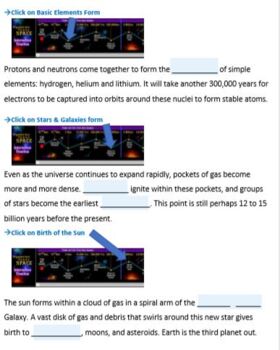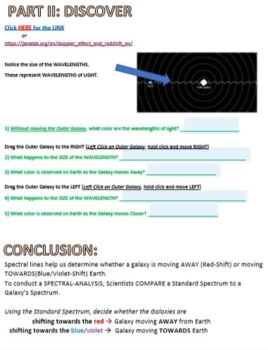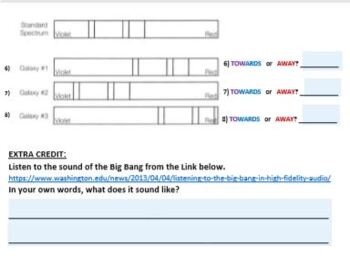Big Bang Evidence: Red Shift - Virtual Lab Simulation
ORANGE CAT PRODUCTIONS
16 Followers
Grade Levels
6th - 11th, Homeschool
Subjects
Resource Type
Standards
CCSSRST.6-8.3
CCSSRST.6-8.6
CCSSRST.6-8.8
CCSSRST.9-10.5
CCSSRST.9-10.7
Formats Included
- PDF
- Internet Activities
Pages
4 pages
ORANGE CAT PRODUCTIONS
16 Followers
Compatible with Digital Devices
The Teacher-Author has indicated that this resource can be used for device-based learning.
What educators are saying
This lab was very helpful in my physical science classes. I struggled to find labs that covered the Big Bang and this does a nice job.
Very engaging. The links and the fact that students can type answers directly into the lab are awesome.
Description
NO FLASH NEEDED!
Students will explore the early steps of the Big Bang and then prove the Universe is expanding by manipulating the light of a galaxy moving away from or towards Earth.
This virtual lab is excellent for remote or in-class laboratory exploration.
The virtual lab simulation worksheet contains auto-fill in blanks, so no annotation software is needed. The links for the free sites used are located within the lab.
Total Pages
4 pages
Answer Key
N/A
Teaching Duration
45 minutes
Report this resource to TPT
Reported resources will be reviewed by our team. Report this resource to let us know if this resource violates TPT’s content guidelines.
Standards
to see state-specific standards (only available in the US).
CCSSRST.6-8.3
Follow precisely a multistep procedure when carrying out experiments, taking measurements, or performing technical tasks.
CCSSRST.6-8.6
Analyze the author’s purpose in providing an explanation, describing a procedure, or discussing an experiment in a text.
CCSSRST.6-8.8
Distinguish among facts, reasoned judgment based on research findings, and speculation in a text.
CCSSRST.9-10.5
Analyze the structure of the relationships among concepts in a text, including relationships among key terms (e.g., force, friction, reaction force, energy).
CCSSRST.9-10.7
Translate quantitative or technical information expressed in words in a text into visual form (e.g., a table or chart) and translate information expressed visually or mathematically (e.g., in an equation) into words.





